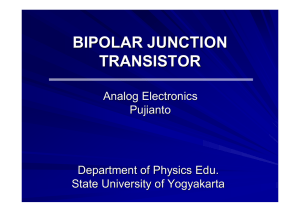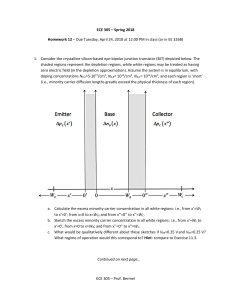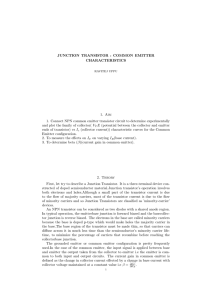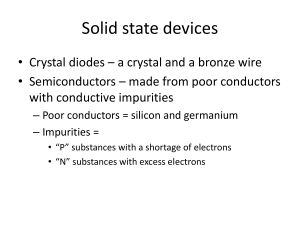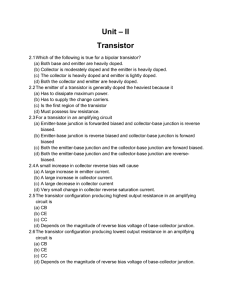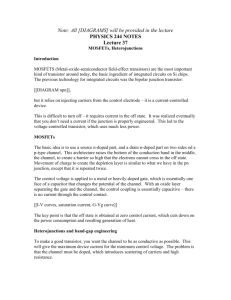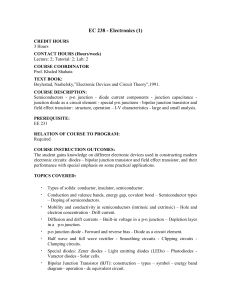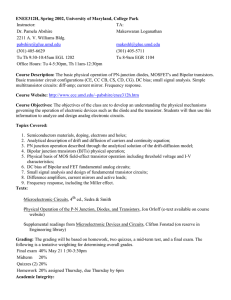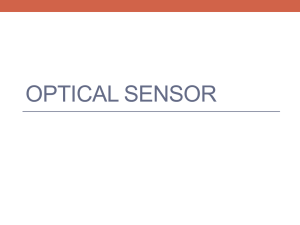C5 - Vicphysics
advertisement
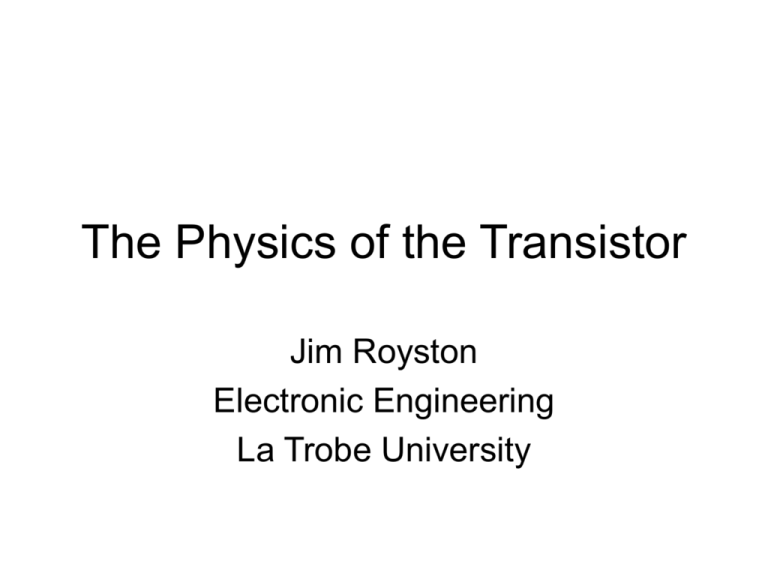
The Physics of the Transistor Jim Royston Electronic Engineering La Trobe University • The B-E junction is forward biased and the C-B junction is reverse biased. • There is an exponential relationship between the thickness of the B-E depletion region and the current of electrons "injected" into the base as minority carriers. VBE I C I S exp VT • The base region is very thin and has a lower doping than the emitter or collector. • The profile of concentration of minority carriers (electrons in an NPN transistor) in the base is linear. • The amplifying action is produced by transferring a current from a low-resistance circuit to a high resistance circuit. • transfer + resistor → transistor • The C-B junction has a reverse bias leakage current ICBO which is typically microamps or nanoamps, and can be neglected unless temperature effects are important. • Approximately, ICEO ≈ β ICBO but both currents are small. • There is an injection of holes into the emitter, where they are minority carriers, from the base – this can be kept small by heavily doping the emitter with donor impurities. Gray, P. R. & Meyer, R. G., "Analysis & Design of Analog Integrated Circuits", 3rd edition 1993, New York, John Wiley & Sons. References • William Beaty "How Do Transistors Work?" 1995 http://amasci.com/amateur/transis.html • Wikipedia "Bipolar Junction Transistors" accessed 2007 http://en.wikipedia.org/wiki/Bjt • Gray, P. R. & Meyer, R. G., "Analysis & Design of Analog Integrated Circuits", 3rd edition 1993, New York, John Wiley & Sons. • Bogart, T. F. et al, "Electronic Devices & Circuits", 3rd edition 2001, Upper Saddle River, New Jersey, PrenticeHall (Pearson). • Boylestad, R. L. & Nashelsky, L., "Electronic Devices and Circuit Theory", 8th edition 2003, Upper Saddle River, New Jersey, Prentice-Hall (Pearson).

